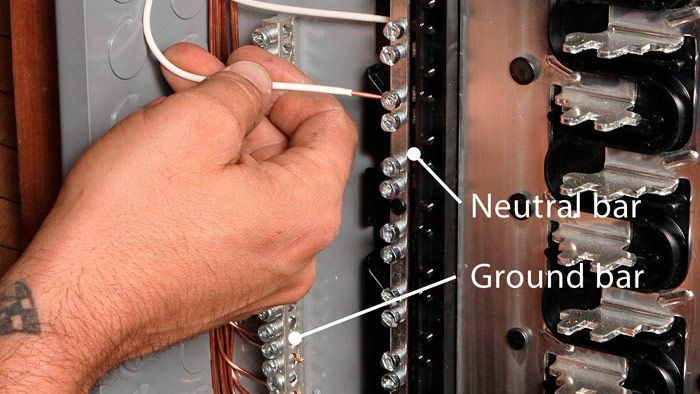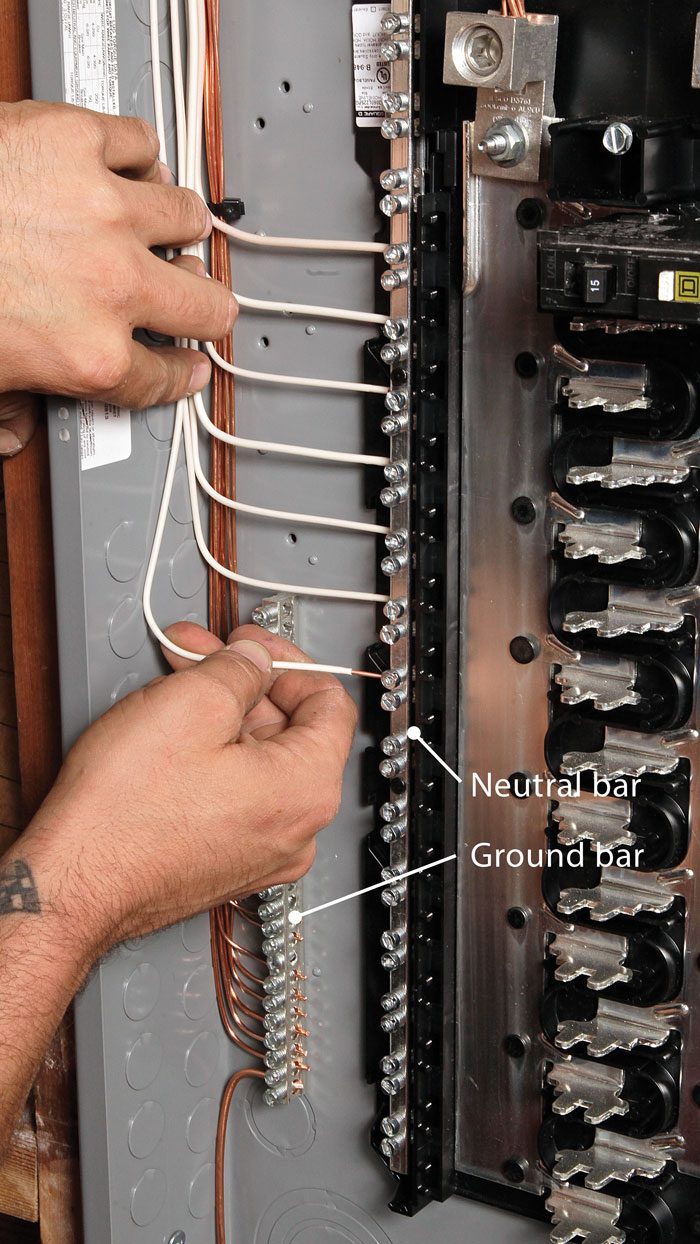Why Do I Have To Separate Grounds and Neutrals?
One of these wires is meant to complete a circuit and the other is there just for safety.

I know the electrical code requires the ground and neutral bars in a subpanel to be separate, and for the subpanel to have its own ground rod. I don’t understand why, though. Don’t the grounds and neutrals all end up going to the same place anyway?
—Andy Engel, Roxbury, Conn.

and neutrals must be isolated from one another. Here, they connect to different bars in the subpanel.
Cliff Popejoy, a licensed electrical contractor in Sacramento, Calif., replies: Let’s start by looking at what the neutral and the ground do in a circuit. Whether it’s a feeder circuit supplying a subpanel, or a branch circuit supplying a receptacle outlet, the neutral conductor is the return path for electrical current. Any time a circuit supplies power to a light bulb, tool, or other device, electrical energy flows from the source along a wire (usually black or red in a 120v system) to the thing that uses the energy (the load), and then the electrons return to the source on the neutral wire.
A ground wire, which is better called an “equipment-grounding wire,” is there to provide a path from any metal parts of an electrical device that could possibly become energized and pose a shock hazard back to the breaker panel that supplies the circuit, and only carries current if there’s a ground fault. These occur when a hot wire—or neutral wire carrying current because the load is on—touches some metal part of the device due to a loose wire or other deficiency. The grounding conductor provides a safe path for the wayward electricity to flow back to the panel to trip the breaker and kill the power. Without the grounding wire, that misdirected electricity could shock you.
At the main service panel, the neutral and grounding wires connect together and to a grounding electrode, such as a metal ground rod, which is there to handle unusual pulses of energy, such as a lightning strike. This is the only point at which the neutral connects to ground. If the neutral and grounding wires are connected together anywhere else, the return current that is meant to flow on the neutral will flow back to the panel on both the neutral and ground. This is dangerous for several reasons; most importantly, if there’s a poor connection or break in the grounding wire and the neutral wire, the parts of the grounding system on the far side of the break (from the panel) will be energized and present a shock hazard. This is a big deal, because any exposed metal part of a fixture, tool, or appliance may shock or electrocute you—and breaks or poor connections happen more often than you’d think.
The National Electrical Code (NEC) requirement for separated neutrals and grounding wires in a subpanel and separate neutral and grounding conductors back to the main panel, when both panels are in the same building, dates to the 1999 revision. The requirement for separation of neutral and grounding conductors in and to a subpanel in a separate structure first appeared in the 2008 NEC. Does that make a system with a subpanel with combined neutral and grounding connections unsafe? No, although maintaining separation makes for a safer installation.
Photo: Matthew Millham
From Fine Homebuilding #294





